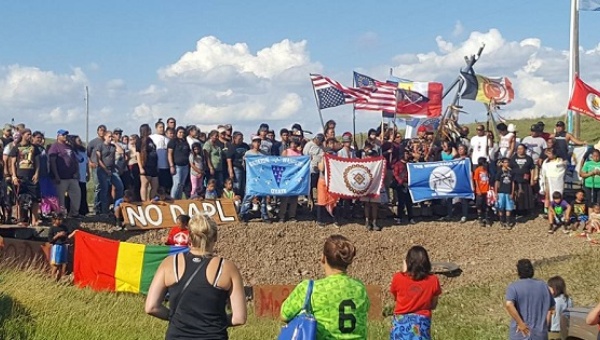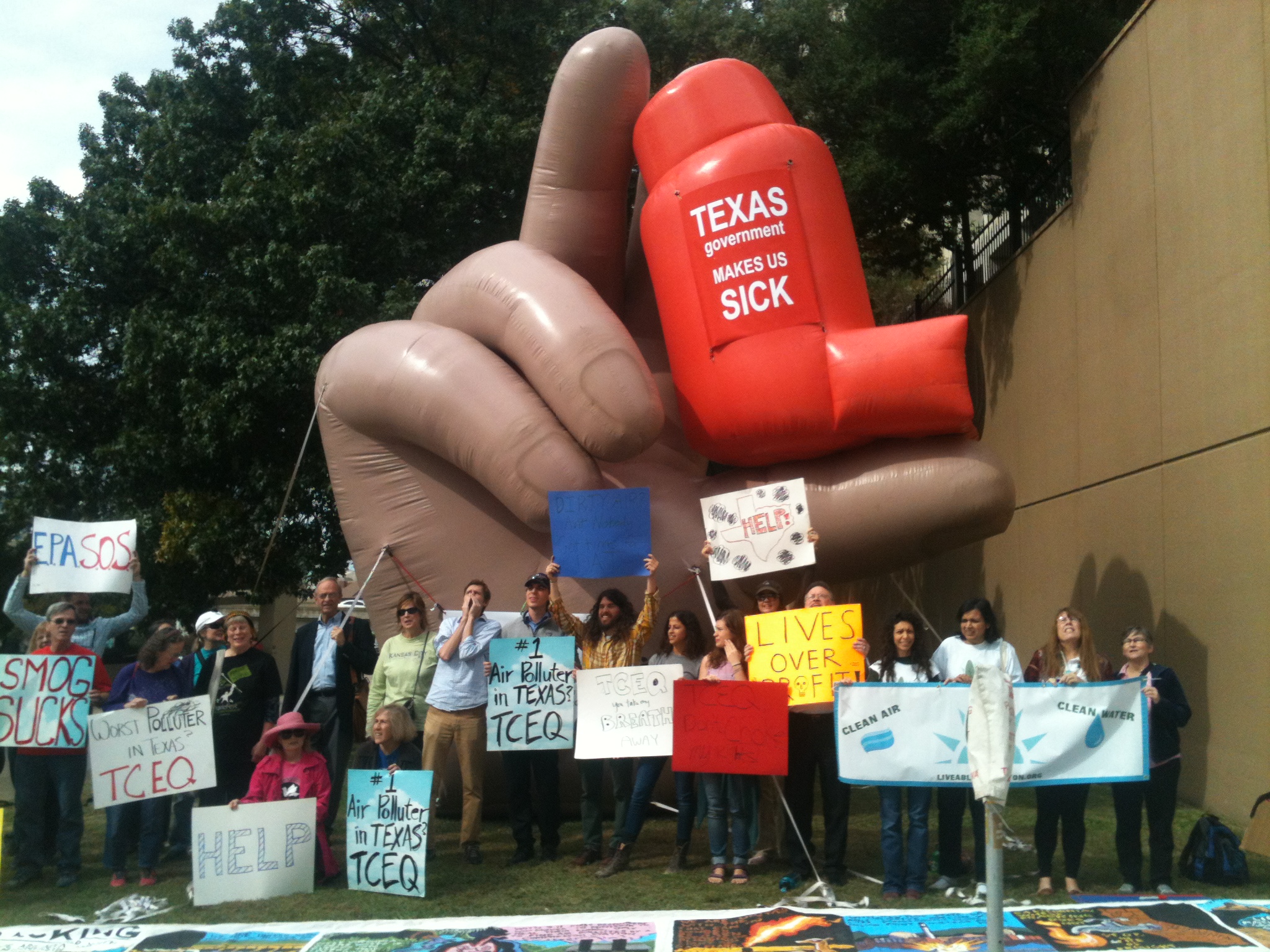Uncategorized
All-Star End of Ozone Season Update and Discussion Oct 27th
"SMOG IN DFW"
END OF THE 2016 OZONE SEASON:
ALL-STAR UPDATE AND DISCUSSION
THURSDAY, OCTOBER 27th
6-8 PM
DREAM CAFE @THE QUADRANGLE
2800 ROUTH STREET #170 DALLAS (map)
THE FEATURED EARTH DAY TEXAS
EDMO EVENT FOR OCTOBER
PARTICIPANTS INCLUDE:
DALLAS CITY COUNCILWOMAN SANDY GREYSON
FORMER DALLAS COUNTY JUDGE MARGARET KELIHER
DR. ROBERT HALEY, TOXICOLOGIST, UT SOUTHWESTERN
DR. DAVID LARY, ATMOSPHERIC CHEMIST, UT AT DALLAS
DOWNWINDERS AT RISK DIRECTOR JIM SCHERMBECK
MODERATED BY RANDY LEE LOFTIS, TEXAS CLIMATE NEWS
Despite five clean air plans written by the state and EPA, DFW has been in continuous violation of the Clean Air Act for smog since 1991.
The current state clean air plan for DFW has one more summer to "attain" the federal ozone standard of 75 parts per billion. We're at a regional average of 80 ppb, down exactly 1 ppb from 2015 levels. The region has never had a one-year 5 ppb drop in smog before.
If the state plan does fail next year, what happens?
Meanwhile, advancements in technology are making it possible for citizens to use increasingly sophisticated tools previously available only to government or industry in their fights for cleaner air.
How much of government's air quality watchdog role can now be assumed by citizens, and should be?
MEET THE DRONES MIXER: Your chance to get close to the Cybers!
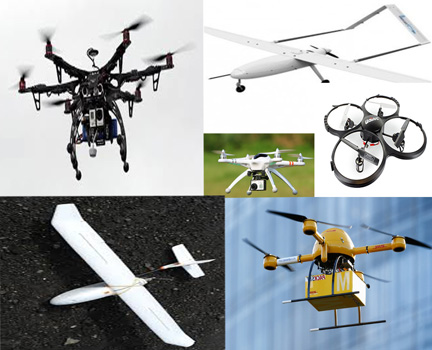 Attention DFW Citizen Scientists and Interested Folk!!
Attention DFW Citizen Scientists and Interested Folk!!
Check out UTD's fleet of drones used for air monitoring and talk to the scientists who use them.
See the "real time results" "dashboard" UNT is developing to pair with these drones.
Meet our academic partners in establishing a grassroots air network better than anything government is doing.
$35 gets you all this, a drink and some food.
Spend the evening getting all cyberized.
TICKETS CAN BE PURCHASED ONLINE HERE:
https://www.eventbrite.com/e/keep-em-flying-launch-of-the-n…
Thank You. We Made Our Giving Day Goal of $6500.
Giving Day Last Call: Help us REPLACE a Corrupt System, Not Just Fight It
Only THREE Hours Left to Contribute
This "Giving Day," Downwinders is trying to raise $6500 to fund a full 72 hours of airborne investigation by our pollution-sniffing drones.
From 6 am to 12 Midnight tonight, contributions of just $25 or more to Downwinders can get matched or expanded by the Communities Foundation of Texas.
OUR GOAL: TO REPLACE THE STATUS QUO, NOT JUST FIGHT IT
We're talking a lot about our drone project today because, let's face it, drones are tech-sexy!
But drone monitoring is just one part of a plan to replace the State of Texas as a source of air quality information for DFW residents.
Just like everything else in the digital world, the cost of reliable air pollution electronic sensors is coming down. What used to cost millions of dollars now costs hundreds of thousands, and tomorrow might cost just thousands.
It's the same reason we were able to clone the state's air computer model and use it in ways the state didn't want it used. That would have been impossible a decade ago. But the price of supercomputing is going down and it allowed us to usurp a function for citizens that was previously only accessible to state engineers.
Now we want to repeat that success.
The state only operates a total of 20 air monitors in North Texas.
Five are boundary monitors – far outside the central cities. That leaves just 15 monitors for 7 million people inside the metro area.
Working with area universities, Downwinders wants to deploy a grassroots citizen-based monitor network that would connect hundreds of monitors across the DFW area.
This network would not only warn you about Smog, but Particulate Matter and Air Toxics as well – something the state network isn't built to do.
The goal is nothing less than to usurp the state's job once again – and once again do it better.
It's important to us not only to fight the Good Fights that need fighting, but to change the system itself as we win those fights.
If you like this strategy, please contribute today to make sure we're around to implement it.
Thank you for your consideration.
Anti-Pipeline Support Action in Dallas on Friday
11 AM
THIS FRIDAY, SEPT 2nd
ENERGY TRANSFER HQ
8111 WESTCHESTER in DALLAS – by the N. Dallas Tollroad (map)
The American Indian Movement of Central Texas is sponsoring a protest in support of the increasingly high profile anti- pipeline protest in the Dakota Indian Country in Dallas this Friday. The event is co-sponsored by a host of local and state environmental groups, including Downwinders at Risk.
If built, the Dakota Access pipeline (DAPL), would pass under the Missouri River…twice. The pipeline threatens to contaminate the drinking water, crops and burial grounds of the Standing Rock Sioux tribe.
Federal regulatory agencies quietly approved DAPL, which will transport Bakkan Shale crude oil from North Dakota through South Dakota, Iowa and Illinois.
The Dallas connection? Dallas-based Energy Transfer Partners is the pipeline's developer.
You may already know Energy Transfer's CEO, Kelcy Warren. He bought the naming rights to the Dallas Deck park over Woodall Rogers that bears his son's name and is a big Jackson Browne fan. Show up and protest Before The Deluge.
Our Drone Will Go Where the Empire, er, TCEQ Won’t
 In yet another shift away from the state's monopoly on air quality information, breathers in North Texas won't have to rely on the Austin-designed system of local air monitoring much longer.
In yet another shift away from the state's monopoly on air quality information, breathers in North Texas won't have to rely on the Austin-designed system of local air monitoring much longer.
On Sunday, Downwinders at Risk won its category in the Earth Tank competition at Earth Day Texas and brought home $3000 to buy a drone the group will modify to perform its own air DFW sampling and monitoring operations.
Working with the TCU engineering department, Downwinders will use the money to purchase a heavy-duty consumer drone and outfit it with small air pollution sensors and sampling equipment that work in concert with smart phones and laptops. The result will be an instrument able to give citizens and scientists real time information about air pollution.
As far as we know, we'll be the first group in the state to have this kind of capability.
Our presentation on Sunday made the case that the current DFW air monitoring network run by the Texas Commission on Environmental Quality gives an incomplete picture of air pollution threats in DFW. Both the limited number of air monitors and their immobility were cited as faults that could be depriving residents of a fuller, more accurate picture of DFW's chronic air pollution problems. Our answer was an air sampling drone that could go practically anywhere at anytime and sample for many different pollutants depending on what's being monitored.
One of the examples we used was Wise County, which is the most recent addition to the DFW 'non-attainment area" for smog. Despite it now being a part of the regulated smog zone, and despite the fact repeated computer air modeling by the state shows the highest smog levels in the region could be found there, Wise County has no smog monitors. Not a one.
Austin knows if it puts a new monitor is Wise County, DFW's annual smog average might go up even higher than it is now, and so the TCEQ has treated the County like it's not there.
Downwinders' drone will be able to show-up in Wise County on "ozone action days" and actually take real time measurements of smog for evidence demonstrating the need for an official monitor. TCEQ already hates this idea.
We'll also be able to do things like take methane readings over the gas patch, montior the plumes at accident sites (think the Magnablend catastrophe in Waxahachie a few years ago), and carry out experiments and research projects for area scientists – all the things TCEQ should be doing, but isn't.
This new tool allows us to enter into colaborations with other groups, local governments, and university programs. It's a teaching device we can take to schools. It can back-up citizen complaints. The uses are many.
But as we told the panel of judges on Sunday, our real "killer app" is not the drone itself, but the organization of people we put in place to operate it and decide how to use it.
Dr. Michael Slattery of the TCU Institute of Environmental Studies will head a group of researchers, technicians, and citizens who will assess projects, train drone pilots, and help administer "The North Texas Clean Air Force." Downwinders at Risk board member and Mansfield fracking activist Tamera Bounds has already signed-up. "I can't wait to learn how to fly that thing."
With the creation of this group, we'll be establishing a parrallel air quality monitoring program that once again opens up a previoulsy closed black box in Austin to citizen use. Just last November, we unveiled our DFW Ozone Study that, for the first time ever, took the state's own computer air model for DFW, cloned it, and had it do things the state did not want done – like tell us how much less smog would be breathed in DFW if you put modern controls on the largest industrial polluters.
In taking on these responsibilities which have tradtionally fallen to the state, our goal is not only to provide valuable new tools to citizens, but build new structures of decision-making about air quality that puts citizens in charge. For us, it's as important to change the way we make decisions as it is to add to the scientific literature, or bring smog levels down. It's right there in our mission statement,
Our goal is to build a strong grassroots constituency and create new strategies for clean air in North Texas.
We do this by informing, connecting and mobilizing citizens to become active participants in the decision-making that affects the air we breathe.
In doing so, we improve both the quality of our air and the quality of our democracy.”
We still have a lot of research to do, a lot of mistakes to make, a lot of experience to absorb, but creation and operation of a North Texas Clean AIr Force is one more step to building the kind of citizens' self-defense system necessary when your state government abdicates its job of public health protector.
Now, because the state's monopoly on data is crumbling with each new advancement in micro-processing, we're willing and able to step into this vacuum of leadership. Our goal is not only taking over the jobs Austin isn't doing, but creating a more citizen-friendly way of doing those jobs.
Move over TCEQ, the North Texas Clean Air Force is about to take off.
Federal and Local Officials Send Own SOS To EPA to Reject Do-Nothing DFW Anti-Smog Plan
Release from Dallas County Commissioner Theresa Daniel's office today at 3:30 pm
Officials Seek EPA Help in
Clean-Up of DFW Smog
Rep. Johnson and Veasey send letter to Agency chief;
Commissioner Daniel puts resolution on May 3rd
Dallas County Court agenda, say “more
progress needed” than current
state air plan delivers.
(Dallas)— In an unprecedented coordination of local and congressional action on air quality, elected officials announced they were formally asking for the EPA’s help in producing a better plan to clean up DFW’s chronic smog, now in its third decade of violating the Clean Air Act.
In Washington, Dallas Representatives Eddie Bernice Johnson and Marc Veasey released the contents of an April 19th letter they sent EPA Administrator Gina McCarthy, citing the Agency’s own public comments, and calling the state's current plan for addressing air quality in DFW ‘insufficient to meet the existing federal ozone standard.”
“We ask you to consider rejecting the state’s plan and the use of a Federal Implementation Plan if your agency decides that the final SIP revision is insufficient.”
In Dallas, County Commissioner Theresa Daniel has put a resolution on the Court’s May 3rd agenda that urges the EPA “to reject the proposed State Implementation Plan for DFW ozone pollution, and require a new federal DFW clean air plan that can meet or exceed the current 75 ppb federal ozone standard…"
Daniel’s resolution also requests the EPA to “regulate East Texas coal plants as if they were in the DFW non-attainment area, or include them in a larger non-attainment area for North Texas under rules governing the new federal 70 ppb ozone standard.”
“What’s at stake is the last opportunity to take a coordinated regional approach to reducing air pollution until at least 2021,” said Daniel, who’s been helping oversee a local air quality research project produced by the UNT Engineering Department. “After decades of being in violation of the Clean Air Act, we need more and faster progress to solve this serious public health issue costing us lives and dollars every year”
What Daniel and the Representatives are seeking is an official EPA rejection of an anti-smog plan for DFW and surrounding counties already passed by the state and on its way to EPA. The plan provides for no cuts in pollution from any major sources in North Texas, relying instead on a coming 2017 nationwide federal mandate that will reduce smog-forming pollution from traffic.
Because its contents are well known and a public comment period has passed, EPA’s skepticism of the state’s plan is on the record. The Agency’s conclusion that the plan needs some 100-200 tons a day more in additional air pollution cuts to attain the necessary drop in smog is used in the congressional letter calling for federal intervention. Daniel’s resolution also cites the EPA’s comments as one of the reasons the region needs to reject the state plan and draft a better one.
Although unprecedented in the long history of DFW air quality planning, the officials’ request follows on the heels of a similar resolution passed by the Texas Medical Association last year., spurred on by local Dallas County doctors who’ve been speaking out about the health dangers of DFW’s continuing smog problem. Many of those same doctors say they’ll be present on the 3rd to voice their support for Daniel’s resolution and praise Johnson and Veasey for taking the lead in Washington.
“Evidence is overwhelming that our high ozone levels are causing increasing numbers of area children to develop asthma, and are contributing to the many asthma attacks, chronic lung disease exacerbations, and heart attacks we see every day in our emergency rooms, clinics and hospitals,” said Robert Haley, MD, a Dallas internist and epidemiologist. “A large body of medical research shows that more people of all ages develop respiratory illnesses and die prematurely in cities with high ozone levels, and we have among the highest ozone levels in the country.”
On Wednesday the American Lung Association issued its annual “State of the Air” report and once again gave the Dallas-Fort Worth area an “F” for air quality. Although the number of dirty air days and their severity has fallen over the years, the region is still not in compliance with the Clean Air Act.
Daniel cited the new report as one more reason she, Johnson, and Veasey have to take action now. “This is the only opportunity until the next decade to get a better clean air plan for North Texas. If we don’t take the right steps in 2016, we’ll still be getting an “F” in 2026.”
__________________________________________________________________________________
Morning News Names Jeff Mosier as its New Environmental Reporter
 Notice came on Friday that the Dallas Morning News had finally decided to fill the environmental beat reporter position left vacant by Randy Lee Loftis' departure. The lucky winner was announced via a response to a reader's comment on a story about the Lake Lewisville BLM fracking lease sale.
Notice came on Friday that the Dallas Morning News had finally decided to fill the environmental beat reporter position left vacant by Randy Lee Loftis' departure. The lucky winner was announced via a response to a reader's comment on a story about the Lake Lewisville BLM fracking lease sale.
"This is just one more reason the Morning News needs an environmental beat reporter," wrote the reader.
"That would be me," replied reporter Jeff Mosier, whose debut under his new job title was that day's story on the BLM fracking lease.
Shortly after, Mosier sent out this "job status" tweet with picture of the Lake Lewisville story, "My debut as environmental writer for @dallasnews. I'll spend more time at landfills than Super Bowls now"
That's a reference to Mosier's stint as a DMN SportsDay reporter covering the Cowboys on and off since at least 2004. Texas environmental politics is definitely a contact sport, but that's not the reason he was picked. He's a News journeyman who came to the paper with a lot of other former Times Herald employees in 1994 and rose through the ranks on a number of different beats. Here's a sampling of his coverage of Dallas City Hall goings-on. So local politics is not a foreign subject matter.
More on point, he was writing for the News' Tarrant County/Fort Worth Bureau in the early stages of the citizen backlash to urban drilling in the Barnett Shale. He's familiar with the issues surrounding fracking and wrote about them from roughly 2009 to 2013. Some examples:
Air tests at natural gas drilling sites fuel concerns in Barnett Shale
State will report today on Barnett Shale air pollutants
Texas House bill seeks to scale back city gas drilling restrictions
Arlington suing Chesapeake Exploration over claims of unpaid natural gas royalties
Cowboys Stadium site isn't expected to be used for gas drilling
From all previous indications, it looked like the News was grooming long-time Educational Reporter Jeffery Weiss to take Loftis' place. Weiss covered the unveiling of Downwinders' UNT Ozone Study and Dr. Robert Haley's Public Health Cost Study back in October, as well as the subsequent Dallas County Commissioners' resolution on reducing pollution from obsolete East Texas coal plants. But apparently Weiss is being put in charge of Energy coverage for the paper.
These moves are all part of a large shake-up of the entire Morning News newsroom as the paper tries to make the on-going rocky transition from print to digital. Lofttis' retirement could have been seen as a chance to do some necessary belt-tightening at the expense of a hunk of coverage. To the paper's credit, it resisted that temptation and named a new environmental beat reporter.
While Mosier's not a complete neophyte, he faces a steep learning curve. Give him some slack as he begins to reacquaint himself with The Way Things Really Work, and let's see if he can provide the public with needed clear-eyed reports from the front.
The Most Important Local Environmental Hearing of the Year?
 A Public Hearing about the Air YOU Breathe
A Public Hearing about the Air YOU Breathe
Thursday, January 21st
Public Comment begins at 6:30 pm
616 Six Flags Road, Arlington
(HQ of the North Central Texas Council of Governments)
What makes this hearing so important?
Well, it's not the fact the state is hosting it. Nobody expects the State to care about this hearing, except as a legal formality
It's important because the EPA will be there listening. It's never taken a clean air plan away from the state before. it's a big step. It will be controversial. They need to see DFW residents asking for them to do it. They need to feel they have the political support to go through with such a drastic action.
It's important if you or anyone you know suffers from asthma or other respiratory illnesses that get worse when the air is dirty. Dr. Robert Haley of UT-Sothwestern Medical School has a new study showing just a small drop in North Texas smog can have huge health benefits and savings.
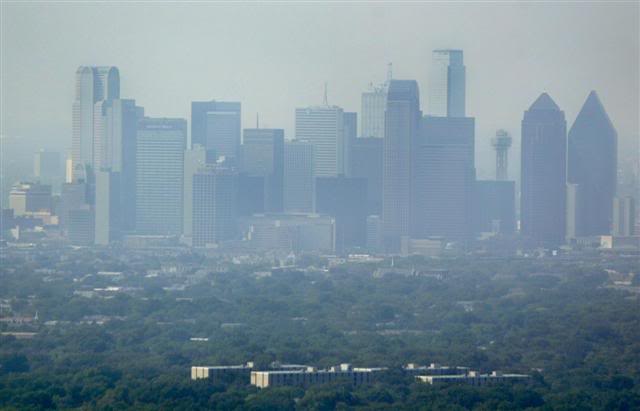 What Can I Do?
What Can I Do?
1. Show-up at the hearing on the 21st and tell EPA you want them to write their own clean air plan for DFW – use the talking points below.
2. Spread the word about this hearing. Forward this call to action to other folks. We only have two weeks to organize.
3. Watch and forward our two and a half minute "SOS@EPA" video– it makes the case for why we need EPA's help…to a steady disco beat.
4.Sign the Change.Org petition calling for EPA to reject the state air plan and write one of its own
5. Send an email to EPA telling them the same thing.
______________________________________________
Show Up to Tell EPA to Take DFW's Air Plan Away From the State
1. The Dallas-Fort Worth area has been in continual violation of the federal Clean Air Act for ozone, or smog pollution, since 1991.
2. DFW is currently classified as a "non-attainment area," or not complying, with the current federal eight-hour ozone pollution standard of 75 parts per billion (ppb), (a standard now considered to be inadequate and soon to be replaced by a lower 70 ppb standard)
3. According to the USEPA, DFW will be one of only ten non-California metropolitan areas still in violation of the Clean Air Act, and the new federal ozone standard of 70 ppb, in 2025 without additional reductions in pollution.
4. DFW's regional annual smog pollution average increased from 81 ppb in 2014 to 83 ppb in 2015. Our smog got worse last year.
5. Dallas-Fort Worth now has a higher annual smog level than Houston.
6. According to a Cook Children's Hospital study, Dallas-Forth Worth has childhood asthma rate three times the national average. 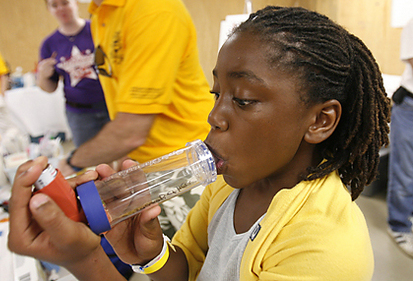
7. Computer air modeling by the Texas Commission on Environmental Quality (TCEQ) predicts its DFW clean air plan will still leave at least four North Texas monitors with annual averages exceeding 75 ppb of ozone pollution at its conclusion – including one at 77.8, or 3 ppb higher than an old standard we know isn't protective. TCEQ's plan doesn't even reach the goal it's supposed to meet.
8. In official comments, the USEPA has stated that TCEQ's proposed DFW clean air plan will not be effective"without additional reductions" in smog-forming pollution, and warned that the State's refusal to comply with certain Clean Air Act requirements make the plan unacceptable. TCEQ's proposed DFW clean air plan requires no such additional reductions.
9. In 2011, the last TCEQ clean air plan that required no new pollution controls left ozone levels higher than when it began – the first time any clean air plan for DFW had done that.
10. Members of the Engineering Department of the University of North Texas (UNT) have, with TCEQ cooperation, replicated the State's computer air pollution model for the DFW clean air plan, and used it to study how additional controls at major sources of smog pollution could reduce ozone throughout the Dallas-Fort Worth non-attainment area.
Results from the UNT study demonstrate additional controls at selected major sources of pollution would significantly reduce DFW ozone levels, including Selective Catalyst Reduction at Midlothian cement kilns and East Texas coal plants, and electrification of large natural gas compressors in the Barnett Shale.
The UNT study demonstrates a clean air plan for DFW that includes these controls would meet or exceed the current ozone standard of 75 ppb at all North Texas air monitors.
11. A 2015 study by University of Texas Southwestern Medical Center's Director of Epidemiology, Dr. Robert Haley, estimates a 5 ppb reduction in ozone pollution would result in economic savings of $650 million a year and prevent 100 deaths annually throughout Northeast Texas12. In 2015, the Texas Medical Association officially requested USEPA to reject TCEQ's proposed DFW clean air plan and substitute one which "conforms to the scientific, peer reviewed modeling methods developed by UT Southwestern and University of North Texas experts.… (and) implementing reasonably available control measures at the state level capable of meeting national ozone standards, based on the UTSW and UNT validated models."
12. In 2015, the Texas Medical Association officially requested USEPA to reject TCEQ's proposed DFW clean air plan and substitute one which "conforms to the scientific, peer reviewed modeling methods developed by UT Southwestern and University of North Texas experts.… (and) implementing reasonably available control measures at the state level capable of meeting national ozone standards, based on the UTSW and UNT validated models."
13. Over the last 20 years, and five different plans, the State of Texas has never succeeded in bringing DFW into compliance with the Clean Air Act. It's time to let EPA try – they can't do any worse.
14. EPA just released a Federal clean air plan for haze pollution in parks after the state refused to provide an adequate one of its own. That's great. It should now write one for the seven million people of the DFW area. We deserve at least as much protection from the state's willful contempt for the Clean Air Act as parkland.
TCEQ: New Smog Numbers Widen Clean Air Gap, But Still “Close Enough”
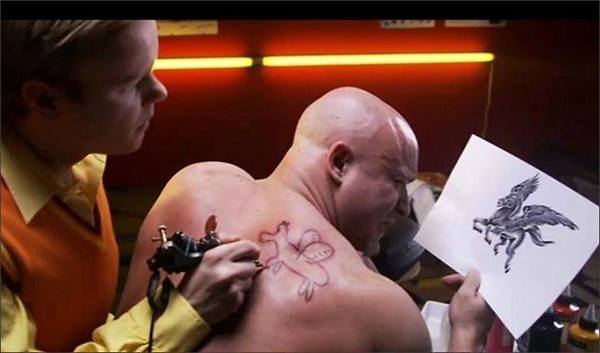 Only an hour after a public plea to EPA by local residents to rescue them from the state's laissez-faire enforcement of environmental laws, the Texas Commission on Environmental Quality proved the protesters' point at last Friday's regional air quality meeting by announcing a bigger gap between the current federal smog standard and the Commission's anti-smog plan supposedly designed to meet that standard in DFW.
Only an hour after a public plea to EPA by local residents to rescue them from the state's laissez-faire enforcement of environmental laws, the Texas Commission on Environmental Quality proved the protesters' point at last Friday's regional air quality meeting by announcing a bigger gap between the current federal smog standard and the Commission's anti-smog plan supposedly designed to meet that standard in DFW.
The goal is to average 75 parts per billion (ppb) or less of ozone in the air over any single eight hour period at all 20 DFW monitors by 2017, per a court order that rolled the deadline back from 2018. DFW is at 83 ppb now. TCEQ announced its latest estimates have DFW clocking-in a best case scenario of 77.8 parts per billion by the end of 2017.
But don't worry, because TCEQ says that's still "close enough" to 75 to count as a bulls-eye.
One wonders what would happen if this kind of precision was practiced in other critical fields. Your surgeon mistakes your Thoracic Aorta for the Abdominal Aorta? Understandable, they both start with "A." Bank statement off by a decimal point or two? Surely not enough of a change to worry about.
And is a jump of almost two parts per billion in regional smog over the last estimate any reason for perhaps considering new smog controls for major sources of pollution, like, say, cement plants, coal plants, or oil and gas sources? Nope, says TCEQ. No need to inconvenience those industries because of some little ol' public health harms that we as a state agency have been trying to downplay and deny for years now.
"2 to 3 parts per billion here, 2 to 3 parts per billion there – what's the difference" TCEQ asks? "We'll throw in things the EPA can't possibly quantify – like 'sustainable building' and 'bicycle paths' and Viola! we'll get down to "77" ppb in two years with no problems…somehow. That's within the margin of error – that we always blow past. We've always relied on this tried and true approach of aiming low and we've had great success so far, we're 0 for 5 in reaching attainment on time over the last two decades."
Co-facilitating this charade to some extent is EPA itself, which still allows state governments to round DOWN 77.8 to 77, knocking off almost a whole part per billion in TCEQ's always-sunny scenario on paper, if not in the actual atmosphere of 2018, where it counts more.
Particularly galling about the state's lackadaisical approach to meeting the current 75 standard is that it comes at a time when we know that number is still too high to adequately protect public health. EPA has just proposed lowering it to 70 ppb based on an overwhelming amount of evidence. Instead of a smog plan that always seems to come in two to three parts per billion over the standard, how about we draft one that comes in at one to three parts per billion under the standard? One that anticipates the need to get even cleaner air in the future and gives us a running start?
As it turns out, we have fresh evidence, provided by the state's own computer model, that requiring off-the-shelf modern pollution controls on those cement kilns, coal plants, and oil and gas facilities could lower DFW regional smog by at least one to two parts per billion, putting us in a much more likely position to actually meet the smog standard. TCEQ looks at this result, wrinkles up its collective nose and says its only a one or two parts per billion change. To which the logical reply is: "OK, show us how you get down closer to 75 ppb without cuts in emissions from those major sources."
Crickets.
Because of course, TCEQ has no alternative, no Plan B, no way to get down to the 75 ppb standard that involves doing something. It isn't invested in that goal. As its website explains, the Commission's "customers" are the industries seeking its permits. Many of those customers are very upset at the mean ol' EPA for following the Clean Air Act. And the customer is always right.
So TCEQ drafts a customer-friendly clean air plan for DFW with no controls on any major sources, makes a new federal gasoline mix do most of the work in the computer model, and (theoretically) crosses the finish line at three parts per billion over the standard. See how hard they tried?
The last time TCEQ tried as hard was the 2011 DFW clean air plan. That "do-nothing" plan was predicted by the state to take us to historically low smog levels because so many more new cars were going to be purchased – during the Great Recession. All we had to do was sit back and watch those babies fly off the lots!
It was the first DFW clean air plan in 20 years to actually produce higher smog levels.
First, but maybe not the last. Regional smog averages rose twice this summer – the first of three that make up a running annual average determining success or failure of the TCEQ plan by 2017. How do you know when a TCEQ clean air plan is being implemented? Smog goes up.
EPA's own modeling is already predicting TCEQ's current "do-nothing" plan won't work, and concludes DFW will be one of only a hand full of metropolitan areas still breathing unsafe and illegal air ten years from now.
In point of fact, no matter how many parts per billion, no gap would be wide enough for TCEQ to find cause for more pollution controls on major sources. They've rigged the game to produce a result they hope allows them to slide by and get EPA approval. It's our responsibility to make sure EPA doesn't give it.
Texas state government has no intention of trying to meet the federal smog standard. It has every intention of dragging out the process so it's unwillingness to implement measures to meet it are obscured by more deadline failures and new Designed-to-Fail plans from Austin. It is a never-ending cycle there's no escape from as long as TCEQ is in charge. Expecting Texas to vigorously enforce environmental laws in 2015 is like expecting Mississippi to enforce federal civil rights law in 1965.
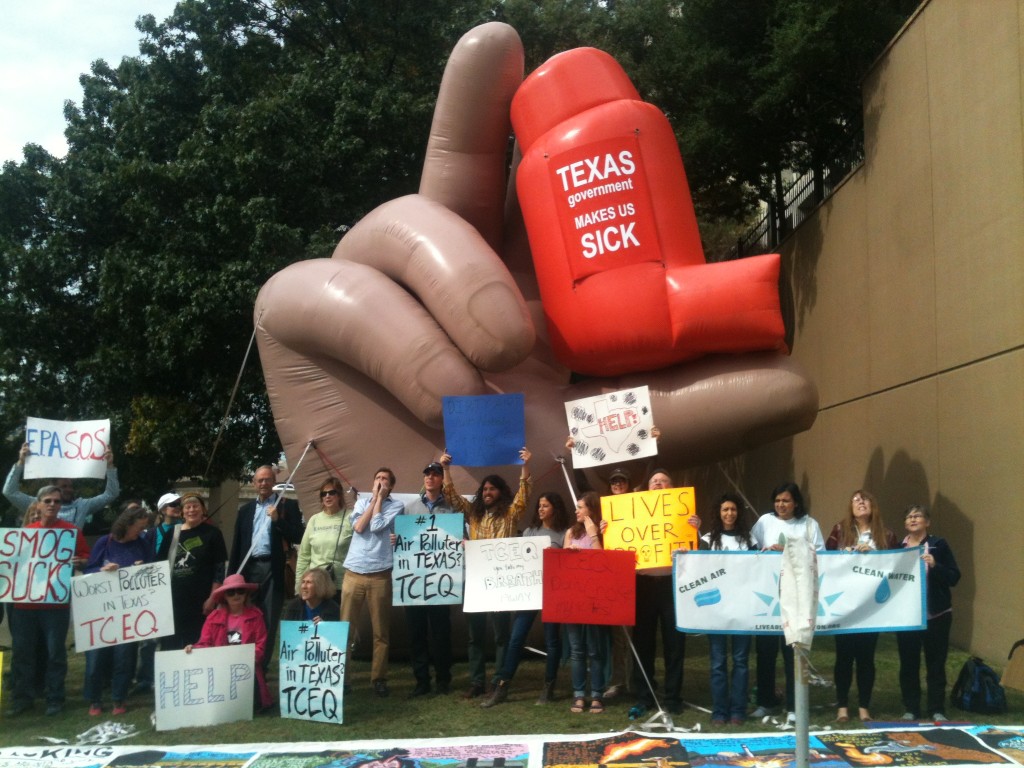
That's why it's important for EPA to takeover the job.
Is it a perfect solution? No, but it's one with a beginning, middle and end, carried out by an agency that still officially believes smog is a public health threat.
PLEASE…sign the petition for a real clean air plan from EPA
AND
Only we can prevent another twenty years of dirty air.





